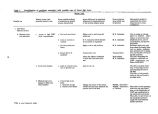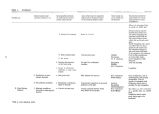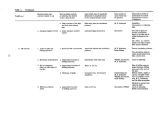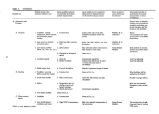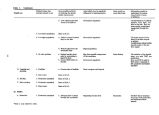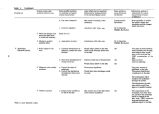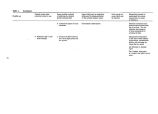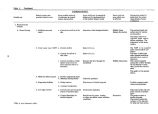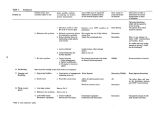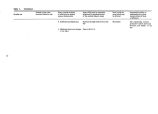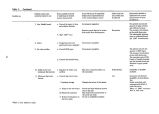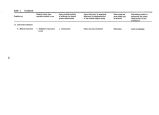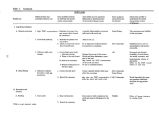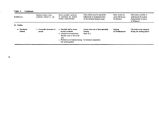| OCR Text |
Show It is, of course, possible for research to be conducted in the absence of the management ( user) and coordination ( linkage) contexts. This situation is depicted by considering only the lowest box in Figure 8. This practice usually leads to an explosion of information which contains much duplication and which is not prioritized in terms of user needs. An example of this kind of proliferation is the past history of research relating to the Great Salt Lake. However, in spite of this so- called proliferation of research, because it was not coordinated in a management sense, much information still is needed with respect to any specific management plan which might be adopted for the lake system. A Research Coordination Plan As indicated by Table 2, many federal, state, and local agencies and several universities have pursued active research and data collection programs on Great Salt Lake. The organizations are concerned with various aspects of resource management, and will continue to assume important roles in the search for additional needed information about the lake system. The problem is to develop a plan for coordinating the research efforts of these ( Table 2) and other groups, such that information is obtained which is consistent with management needs. The plan should provide for the establishment of research needs and priorities which are consistent with a management policy for the lake. The plan also should include a mechanism for altering research needs and priorities in terms of changing social conditions, desires, and practical considerations based on research findings. Figure 9 shows in schematic form a plan which is proposed for the Great Salt Lake Division to coordinate research efforts relating to the Great Salt Lake. The Great Salt Lake Division of the Department of Natural Resources within the state government is shown by this diagram as consisting of three major sections or units. The policy and administrative section is labeled as A, with those parts which are responsible for ( 1) planning and ( 2) research coordination being shown as sections B and C, respectively. The double arrows between sections A and B and between sections A and C are intended to suggest the two- way exchange of information between the executive and ( 1) the planning and ( 2) the research and coordination components of the Great Salt Lake Division. As suggested by Figure 8, the key to a successful research integration program is efficient information exchange. The channels of information flow envisioned for the plan to coordinate research efforts relating to the Great Salt Lake are shown by Figure 9. This system will function in accordance with the following procedure. The Planning Section ( B) will formulate a management plan( s) for the resources of the lake system. This plan will be based on board policies and directions which are received from Section A ( see channel A- Bp of Figure 9). Research needs and priorities evolve from the recommended or adopted management plan( s), and these are transmitted to the Administration and Policy Section ( Section A) through channel B- Ajy[. In turn, policies and research needs and priorities ( as received from Section B and approved by Section A) are transmitted to the Research Coordination Section ( Section C) through Channel A- Cp. Advisory information, such as progress and status reports, is transmitted from Section C to Section A through the channel designated as C- AR. To this point the functions of the system depicted by Figure 9 are entirely " in- house " in that they involve only the Great Salt Lake Division. Under this arrangement the flow of information as depicted between Sections A, B, and C is easily coordinated and controlled. However, the primary objective of the plan is to coordinate the efforts of outside research groups and funding sources, shown as Sections D and E, respectively, by Figure 9. This objective is met by providing for the extensive flow of information between Sections C and D, and C and E. The primary driving functions or stimuli for this information flow are ( 1) an awareness of research needs and priorities ( which itself depends upon information received from Section C), and ( 2) the availability of funds. The second condition requires that funding sources ( such as the Office of Water Resources Research, the National Atmospheric and Oceanographic Administration, the Corps of Engineers, the U. S. Geological Survey, and others) be aware of current research needs and priorities, and be willing to grant research funds accordingly. It is recognized that some organizations ( such as the U. S. Geological Survey) will conduct " in- house" research, and tlius perform a dual role as both funding source and research entity. As indicated by Figure 9 research needs and priorities are transmitted to Funding Sources ( Section E) and Research Groups ( Section D) through Channels C- Ejs| and C- D^, respectively. Requests for further information, proposal abstracts, and entire proposals, if needed, are conveyed from the Research Groups ( Section D) to the Research Coordination Section ( C), and this flow is shown as D- Cj. The flow of evaluation requests, summaries of funded research, and other needed information from Section E to Section C is shown as Channel E- Cj. As suggested by the diagram of Figure 9, the usual role of the Great Salt Lake Division under this concept will be to coordinate rather than to fund research efforts. However, it is expected that research activities in some specific areas of particular interest to the division will be supported directly by that agency. In these cases research proposals will be submitted dir- - » • 59 |


















